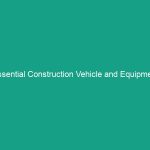Introduction
Good morning team! Today, we are going to discuss an important topic that affects not only our Environment but also our workplace: essential guidelines for reducing water waste. Water is a vital resource, and by minimizing waste, we can contribute to a sustainable future while also enhancing our operational efficiency.
Understanding how to conserve water is not just a responsibility; it is crucial for maintaining Workplace Safety and reducing costs. Let’s explore how each of us can play a role in this effort.
Understanding Essential Guidelines for Reducing Water Waste
Water waste refers to the unnecessary use of water that does not contribute to productive purposes. In a workplace setting, this can manifest as leaky faucets, overuse of water in cleaning processes, or inefficient irrigation practices.
Reducing water waste is significant because it conserves our most precious resource, lowers operational costs, and promotes a culture of Sustainability and responsibility. A common misconception is that water waste is a negligible issue; however, even small leaks can lead to significant water loss over time, impacting both the environment and our budgets.
Key Hazards, Risks, and Safety Considerations
Ignoring water waste can lead to several Hazards and risks. For instance, standing water can create slippery surfaces, increasing the risk of slips and falls. Additionally, excessive water usage can strain our plumbing systems, leading to costly repairs and potential downtime.
Furthermore, from an environmental perspective, excessive water waste contributes to the depletion of local water sources and can lead to higher utility bills. The real-world consequences of ignoring these issues could include:
- Increased operational costs due to higher water bills.
- Potential legal implications from non-compliance with environmental Regulations.
- Negative impact on local ecosystems and biodiversity.
Best Practices, Procedures, & Actionable Advice
To effectively reduce water waste, we should adopt the following Best Practices:
1. Regular Maintenance and Inspections
Conduct regular inspections of plumbing systems to identify and fix leaks promptly. A small drip can waste gallons of water over time.
2. Encourage Efficient Water Use
Implement policies that encourage team members to use water efficiently. For example, promote shorter showers in facilities and discourage running taps unnecessarily.
3. Use Smart Technology
Invest in water-efficient appliances and fixtures, such as low-flow faucets and toilets, which can significantly reduce water usage.
4. Educate and Train Staff
Provide Training on water conservation techniques and the importance of reducing water waste. This creates a culture that values sustainability.
5. Implement Water-Saving Practices
For cleaning Procedures, use mops instead of hoses where possible, and encourage employees to use water-saving techniques in their daily tasks.
Case Studies
Consider the case of a local manufacturing plant that reduced its water usage by 30% in one year by implementing these strategies. They conducted regular maintenance checks and educated employees on efficient water use, resulting in significant cost savings and improved team morale.
Regulations, Standards, and Compliance
It is essential to stay informed about relevant regulations and Standards related to water usage, such as those set by the Environmental Protection Agency (EPA) or local regulatory bodies. Compliance with these regulations is crucial to avoid penalties and ensure that we are contributing positively to our community.
By adhering to these guidelines, we not only protect ourselves but also help maintain a safe and compliant workplace.
Employee Engagement & Discussion
Now that we’ve covered the essential guidelines for reducing water waste, let’s open the floor for discussion. Here are a few questions to consider:
- What specific challenges have you faced in reducing water waste in your area?
- Can you share any successful water conservation techniques that you’ve implemented?
- What additional resources or support do you think would help us reduce water waste further?
Feel free to share your thoughts and experiences!
Conclusion & Key Takeaways
In summary, reducing water waste is an essential practice that Benefits our workplace, the environment, and our overall Safety. By implementing regular maintenance, encouraging efficient water use, investing in technology, and educating ourselves and our colleagues, we can make a significant impact.
Let’s all commit to being proactive in our efforts to conserve water. Remember, every drop counts! Thank you for your attention and dedication to creating a safer, more sustainable workplace.


